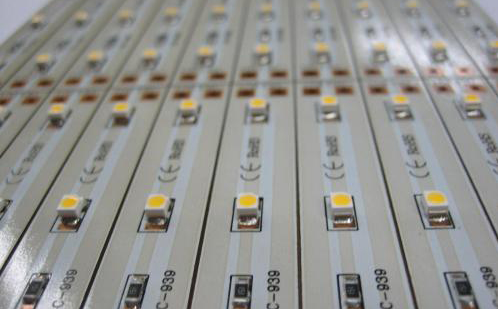SMT uses lead-free solder to meet the first conditions
"Lead" is a compound that not only pollutes water sources, but also causes certain pollution and damage to the soil and air. Once the environment is polluted by lead, its treatment cycle and funding are very huge, but it is more harmful to the human body. This issue has also been paid more and more attention by people. With the strengthening of people's awareness of environmental protection, the use of lead in various industries has become more and more cautious. Among them, in smt patch processing, customers in different industries will be asked whether there are lead-free requirements for the soldering process, which means that electronic manufacturing has very strict requirements for lead-free assembly processes.
First of all, when using lead-free solder in smt chip processing, it must be able to truly meet environmental protection requirements. Lead should not be blindly removed, and new toxic or harmful substances should be added; in order to ensure the solderability and reliability of lead-free solder, And consider the cost borne by customers and many other issues. In general, lead-free solder in smt patch processing should try to meet the following requirements:
First, the melting point of lead-free solder used in smt chip processing should be low, as close as possible to the eutectic temperature of 63/37 tin-lead alloy, 183 degree Celsius.

If the eutectic temperature of the new product is only a few degrees higher than 183 degree Celsius, it should not be very A big problem, but there is no such lead-free solder that can be really promoted and meets the requirements of the soldering process; in addition, before the development of lead-free solder with a lower eutectic temperature, the melting interval temperature difference of the lead-free solder must be reduced Next, it means to minimize the temperature range between its solidus and liquidus. The minimum solidus temperature is 150 degree Celsius, and the liquidus temperature depends on the specific application. (Tin bar for wave soldering: below 265 degree Celsius; tin wire : Below 375 degree Celsius; Solder paste for SMT: Below 250 degree Celsius, usually the reflow temperature should be lower than 225 to 230 degree Celsius).
Second, the lead-free solder used for smt chip processing must have good wettability; under normal circumstances, the lead-free solder stays above the liquidus for 30 to 90 seconds during reflow soldering. The contact time of soldering pins and circuit board substrate surface with tin liquid wave soldering is about 4 seconds. After using lead-free solder, ensure that the solder can exhibit good wetting performance within the above time range to ensure high-quality soldering effect .
The main reason for SMT placement machine throwing
Countermeasure: Clean and replace the nozzle; Reason 2: Identification system problem, poor vision, unclean vision or laser lens, debris interfering with identification, improper selection of the identification light source and insufficient intensity and grayscale, and the identification system may be broken. Countermeasures: Clean and wipe the surface of the recognition system, keep it clean and free of debris, etc., adjust the intensity and gray level of the light source, and replace the components of the recognition system; Reason 3: Position problem, the reclaiming material is not in the center of the material, and the reclaiming height is incorrect (generally After touching the part, press down 0.05MM as the standard), resulting in misalignment, picking is not correct, there is offset, and the identification does not match the corresponding data parameters and is discarded as invalid by the identification system.
Countermeasure: Clean and replace the nozzle;
Reason 2: Recognition system problem, poor vision, dirty vision or laser lens, debris interfering with recognition, improper selection of recognition light source and insufficient intensity and grayscale, and the recognition system may be broken.
Countermeasures: Clean and wipe the surface of the recognition system, keep it clean and free of debris, etc., adjust the intensity and gray level of the light source, and replace the components of the recognition system;
Reason 3: Position problem, the reclaiming is not in the center of the material, the reclaiming height is not correct (usually press down 0.05MM after touching the part), resulting in deviation, the reclaiming is not correct, there is an offset, and the recognition is followed. The data parameters do not match and are discarded as invalid materials by the recognition system.
Countermeasure: adjust the reclaiming position;
Reason 4: Vacuum problem, insufficient air pressure, unsmooth passage of vacuum tube, guide material blocking the vacuum passage, or vacuum leakage caused by insufficient air pressure and the material cannot be retrieved, or it falls on the way after picking it up.
Countermeasures: adjust the air pressure steeply to the required air pressure value of the equipment (such as 0.5~~0.6Mpa--YAMAHA placement machine), clean the air pressure pipeline, and repair the leaking air path;
Reason 5: Program problem. The component parameters in the edited program are not set correctly, and they do not match the actual size, brightness and other parameters of the incoming material, which will cause the recognition to fail and be discarded.
Countermeasures: modify the component parameters, search for the best parameter settings of the component;
Reason 6: Incoming material problems, irregular incoming materials, unqualified products such as pin oxidation.
Countermeasures: IQC will do a good job inspection of incoming materials and contact SMT component suppliers;
Reason 7: The feeder problem, the feeder position is deformed, the feeder feeds badly (the feeder ratchet gear is damaged, the material belt hole is not stuck on the feeder ratchet gear, there are foreign objects under the feeder, spring Aging, or electrical failure), resulting in insufficient or poor reclaiming and throwing of materials, and damage to the feeder.
Countermeasures: adjust the feeder, clean the feeder platform, replace damaged parts or feeders